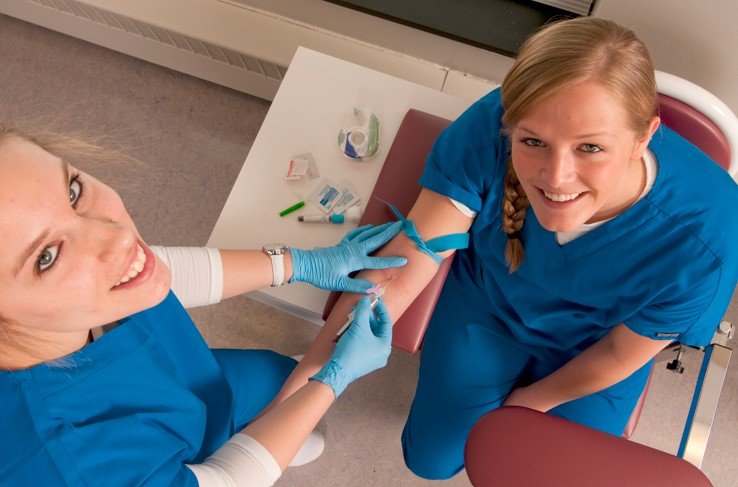Monitoring and Regulation of Medical Devices in US Hospitals: The Role of the FDA
Summary
- The FDA plays a crucial role in ensuring the safety and effectiveness of medical devices used in hospitals in the United States.
- It regulates the manufacturing, marketing, and distribution of medical devices to protect the public health.
- The FDA continually monitors and evaluates medical devices to enhance patient outcomes and safety.
Introduction
Hospitals in the United States rely on a wide range of medical devices and equipment to provide quality care to patients. These devices play a crucial role in the diagnosis, treatment, and management of various medical conditions. However, the safety and effectiveness of these medical devices need to be monitored and regulated to protect the health and well-being of patients. In this context, the Food and Drug Administration (FDA) plays a critical role in overseeing the use of medical devices in hospitals across the country.
The FDA's Regulatory Authority
The FDA is responsible for regulating the manufacturing, marketing, and distribution of medical devices used in hospitals in the United States. This regulatory authority is crucial in ensuring that medical devices meet safety and effectiveness standards before they are made available to patients. The FDA categorizes medical devices into different classes based on the level of risk they pose to patients.
Class I Medical Devices
- Low-risk devices such as tongue depressors and bedpans.
- Subject to general controls to ensure safety and effectiveness.
Class II Medical Devices
- Moderate-risk devices such as infusion pumps and wheelchairs.
- Require special controls in addition to general controls.
Class III Medical Devices
- High-risk devices such as implantable pacemakers and artificial hearts.
- Subject to premarket approval to demonstrate safety and effectiveness.
Monitoring Medical Devices
The FDA monitors medical devices throughout their lifecycle to ensure ongoing safety and effectiveness. This includes post-market surveillance to identify and address any issues that may arise after a device has been approved for use in hospitals. The FDA works closely with manufacturers, Healthcare Providers, and patients to gather real-world data on the performance of medical devices.
Adverse Event Reporting
Healthcare Providers are required to report any adverse events associated with medical devices to the FDA. This information helps the FDA identify potential safety concerns and take appropriate actions to protect patients. The FDA also maintains a public database of adverse event reports to increase transparency and accountability in the use of medical devices.
Recalls and Safety Alerts
The FDA has the authority to issue recalls and safety alerts for medical devices that pose a risk to patient health and safety. These actions may involve removing a defective device from the market, conducting additional testing, or providing updated instructions for use. The FDA works closely with manufacturers and Healthcare Providers to coordinate recalls and ensure that patients are informed of any potential risks associated with a medical device.
Collaboration with Stakeholders
The FDA collaborates with various stakeholders in the healthcare industry to enhance the safety and effectiveness of medical devices used in hospitals. This includes working with manufacturers to support innovation and product development while ensuring compliance with regulatory requirements. The FDA also partners with Healthcare Providers to promote best practices in the use of medical devices and to improve patient outcomes.
Medical Device Innovation Consortium
The Medical Device Innovation Consortium (MDIC) is a public-private partnership that brings together stakeholders from the FDA, industry, academia, and patient advocacy groups to advance medical device innovation. The MDIC supports research and development initiatives to address unmet medical needs and improve the quality of care for patients. By fostering collaboration and innovation, the MDIC helps to drive progress in the field of medical devices.
Healthcare Quality and Safety Experts
The FDA works closely with healthcare quality and safety experts to identify best practices for the use of medical devices in hospitals. These experts provide valuable insights and guidance on how to enhance patient safety and improve the quality of care. By leveraging the expertise of healthcare professionals, the FDA can develop effective strategies for monitoring and evaluating medical devices to ensure optimal outcomes for patients.
Conclusion
The FDA plays a critical role in monitoring the safety and effectiveness of medical devices used in hospitals in the United States. By regulating the manufacturing, marketing, and distribution of medical devices, the FDA helps to protect the public health and promote patient safety. Through ongoing monitoring and collaboration with stakeholders, the FDA strives to enhance the quality of care provided in hospitals and improve patient outcomes.

Disclaimer: The content provided on this blog is for informational purposes only, reflecting the personal opinions and insights of the author(s) on the topics. The information provided should not be used for diagnosing or treating a health problem or disease, and those seeking personal medical advice should consult with a licensed physician. Always seek the advice of your doctor or other qualified health provider regarding a medical condition. Never disregard professional medical advice or delay in seeking it because of something you have read on this website. If you think you may have a medical emergency, call 911 or go to the nearest emergency room immediately. No physician-patient relationship is created by this web site or its use. No contributors to this web site make any representations, express or implied, with respect to the information provided herein or to its use. While we strive to share accurate and up-to-date information, we cannot guarantee the completeness, reliability, or accuracy of the content. The blog may also include links to external websites and resources for the convenience of our readers. Please note that linking to other sites does not imply endorsement of their content, practices, or services by us. Readers should use their discretion and judgment while exploring any external links and resources mentioned on this blog.
